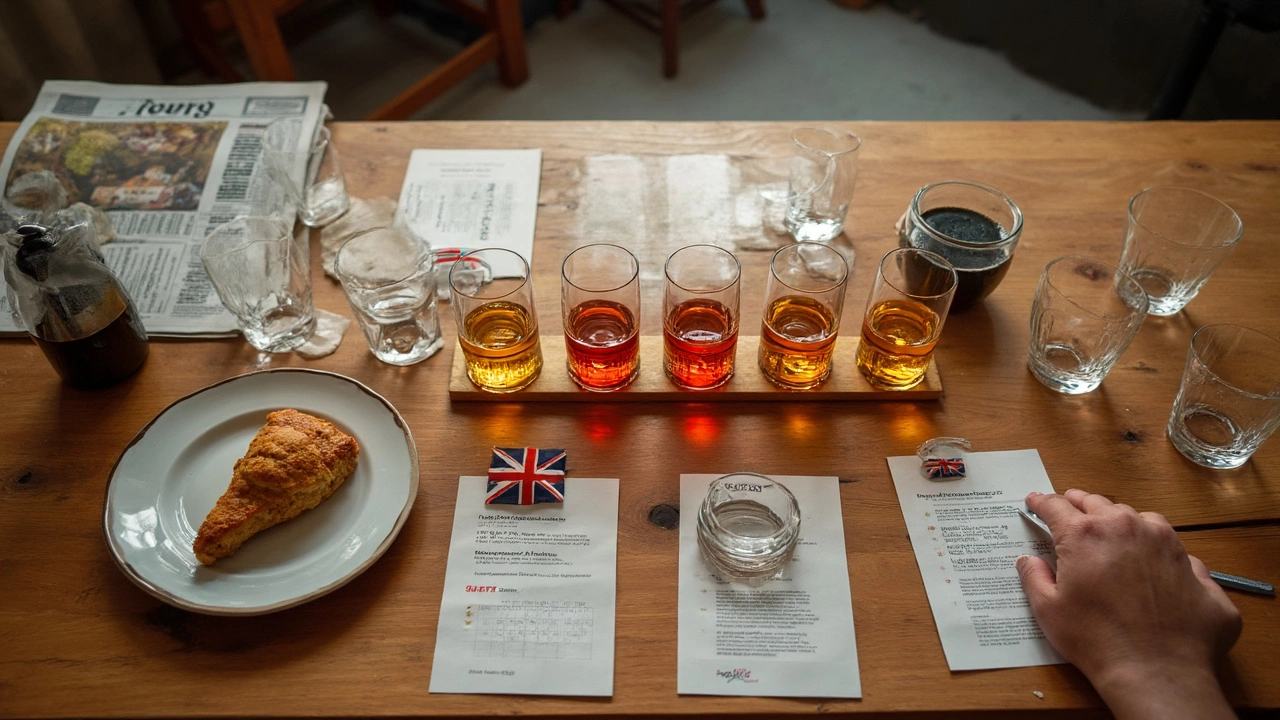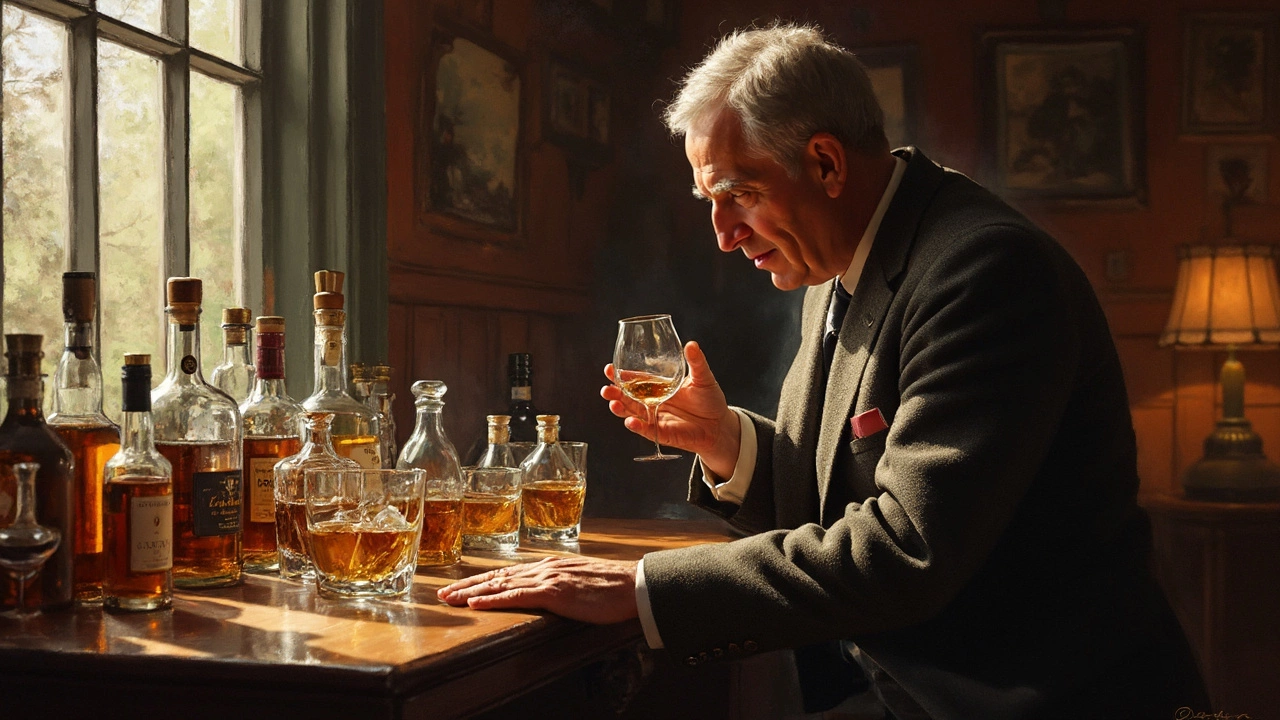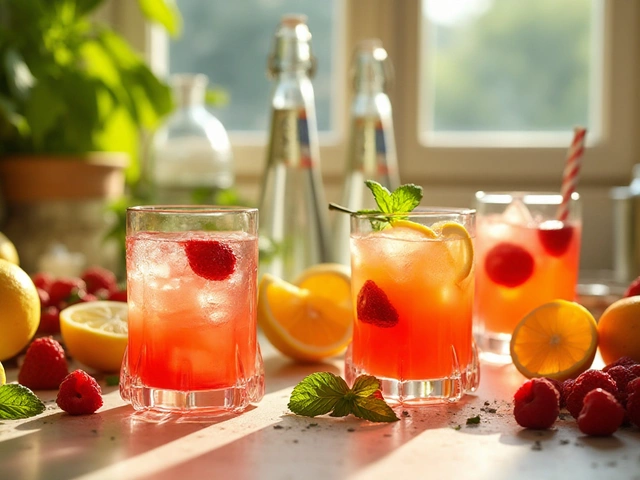Ever poured yourself a drink, skipped the mixer, and taken a second to truly taste what you’re actually drinking? Maybe you got hit with that familiar burn, or maybe, right in that first sip, something just clicked. There's a whole universe of spirits designed to impress you with nothing but themselves—no soda, no juice, no umbrellas. Some spirits are born for this moment, while others really, really need a little help. If you’re about enjoying the raw, simple joy of a perfectly crafted spirit, then let’s zero in on what actually belongs in your glass, neat as can be.
Why Some Spirits Are Made for Sipping Straight
There are bottles you buy to impress your friends or to crank out cocktails—but the true “straight” spirits are proud to stand alone. These drinks are usually distilled with finesse, aged to perfection (if they’re meant to be), and come packed with personality. What’s the big deal about drinking spirits neat? When you nix the mixers, there’s nowhere for flaws to hide. You taste everything: the smooth, the spicy, the subtle sweetness, the lingering bitterness after. A master distiller once said that a great straight spirit should "introduce itself gently and say goodbye politely." That’s what separates the sippers from the shot fodder.
The biggest factor here is craft. Distillers literally fight over water sources, barrel wood, and yeast strains just to nail those signature flavors and nuanced aromas. It all shows up when you drink something straight. Aging matters, too—spirits left to hang out in barrels (think whiskey, rum, brandy) mellow out, picking up flavors you can't create any other way. So, high-proof, subpar vodka? Skip it. But a single malt Scotch kissed by oak for a decade? You want that neat.
If you see “small batch,” “single barrel,” or even "reserve" on a label, those are hints that this may be a drink for sipping, not mixing. Another tip: anything marketed as “smooth” usually means less harshness—good news if you plan to drink it neat. And if a bottle is pushing lots of fruit, nut, or spice notes, that’s a clue it was made for slow appreciation, not quick slamming.
The Heavy Hitters: Spirits That Shine Straight
You’ll find spirits that almost everyone agrees work best on their own, no ice or soda needed. Spirits to drink straight tend to check a few boxes: they’re flavorful, they’re balanced, and, above all, they’re smooth enough to enjoy without coughing your guts out. Here’s your at-a-glance guide to what’s worth sipping straight:
- Whiskey: Scotch (especially single malt and aged blends), bourbon, Irish, and even some rye whiskeys. Look for options with age statements of 8 years or more—this is where the magic happens. Older Scotch often tastes like honey, smoke, vanilla, or dried fruit; bourbon leans into caramel, spice, and oak.
- Brandy & Cognac: High-end cognacs (VSOP, XO, or anything older) and armagnac have deep complexity—think chocolate, dried fruit, nuts, soft spices. Even a VS (the youngest), if it’s a good producer, can be a joy straight.
- Rum: Not all rums work straight, but rums labeled “anejo,” “aged,” or “sipping” often feature caramel, banana, vanilla, and warm spice flavors. Think Zacapa 23, Diplomatico Reserva Exclusiva, or Appleton Estate 12 Year.
- Tequila & Mezcal: Don’t even think about shooting a top-tier tequila. Sip an “añejo” or “extra añejo” for smooth, rounded, and sometimes surprisingly sweet flavors. These are leagues above the harsh stuff served at college parties. Mezcal, with its smoky complexity, is for you if you want to explore more earthy, vegetal notes.
- Vodka: Vodka neat isn’t always the obvious choice, but high-end vodkas—especially those from Eastern Europe—can surprise with softness and minerality. If you’re chasing something neutral and pure, go for this.
- Gin: Here’s a divisive one. Most folks use gin for cocktails, but some gins, particularly those dialed back on the juniper or loaded with interesting botanicals, can be shockingly tasty straight. Think of sipping it as a flavor adventure if you’re up for something out of the ordinary.
But hey, don’t forget about Japanese whisky (known for its subtle elegance and unique flavors), aged aquavit (think spicy-fresh), or even high-end cachaça from Brazil. Every country’s got their “proud to be sipped” spirit. The trick is to follow the flavor—not the label or the price tag. Even pricey bottles can disappoint; at the same time, off-the-beaten-path distilleries can blow your socks off.

How to Actually Enjoy Spirits Neat: Tips, Tricks, and Pairings
Pouring a drink straight is easy enough, but sipping like a pro takes a minute to figure out. Skip the shot glasses. They release zero aroma, so you miss half the point. Instead, use a glass with a tulip or narrow opening (think Glencairn or brandy snifter). This shape brings the aromas right up to your nose—admit it, smelling is half the fun.
Give your glass a swirl. Put your nose in, but not so far you burn your nostrils; take a shallow breath to catch all the bright, hidden notes. Take a tiny sip, let it coat your tongue, and…wait. The first sip might be warming or even a little harsh—that’s totally normal. But once your palate wakes up, the flavors start coming out. Take your time with each sip.
Adding a drop or two of water sometimes opens up the flavors (especially in high-proof whiskeys). Don’t drown it, though—a small splash does the trick. Some folks use a tiny straw to drip in water, but don’t overthink it. Try both ways. You might love the flavor “straight from the bottle,” or discover something new with a hint of water.
Room temperature is usually best. Cold kills flavor, so save the freezer for vodka. Speaking of vodka, the eastern European way is to serve high-quality vodka slightly cooled—straight from the freezer. For whiskey, rum, and brandy, skip the ice cubes.
- Food pairings: Try dark chocolate, sharp cheese, roasted nuts with whiskey or brandy. Smoked meats or aged cheeses work wonders with mezcal or peaty Scotch. For tequila, orange slices and a touch of salt unlock layers you never expected.
- PACE YOURSELF: You’re not here to get wrecked—you’re here to taste. Sip slow. Enjoy the ride.
- Friends Make It Better: Tasting with someone else lets you compare what you pick up—sometimes, your buddy smells banana where you get toffee. That’s where the fun starts.
One mistake? Chasing status bottles, only to realize you don’t like them at all. Drink what tastes good to you, not what the internet says you ‘should’ like. Trust your own taste buds.
Comparing Popular Sipping Spirits: Flavor, Proof, and Price
No two spirits are exactly alike, but when it comes to the classics, a few names always pop up—and for good reason. Here’s a quick table comparing some of the most celebrated straight drinks, their proof (alcohol content), average flavor notes, and a rough idea of price per 750ml bottle:
| Spirit | Typical Proof | Flavor Notes | Avg. Price |
|---|---|---|---|
| Macallan 12 Scotch | 86 | Honey, dried fruit, vanilla, oak | $80 |
| Buffalo Trace Bourbon | 90 | Caramel, spice, oak | $30 |
| Hennessy VSOP Cognac | 80 | Fruit, nuts, cocoa | $60 |
| Zacapa 23 Rum | 80 | Cocoa, vanilla, coffee | $45 |
| Don Julio 1942 Tequila | 80 | Caramel, oak, agave, vanilla | $180 |
| Belvedere Vodka | 80 | Mineral, soft, clean | $35 |
| Monkey 47 Gin | 94 | Herbs, citrus, floral, juniper | $68 |
Take Buffalo Trace, for example: famous for offering a classic bourbon taste at a solid price. Or Don Julio 1942, which tequila fans swear should be sipped, never shot. Macallan 12 is the ‘gateway’ Scotch for people new to single malts; it’s gentle, sweet, and not too peaty. Zacapa 23 rum is dessert in a glass—no mixers needed.
Certainly, some bottles can be shockingly pricey. But you don’t have to spend hundreds—many so-called “entry-level” sippers get rave reviews from critics. Want bang for your buck? Try Old Forester 100 or Barton 1792 for bourbon, Teeling for Irish whiskey, or Appleton Estate 8 Year for rum. And remember, you can always move up the ladder once you know what you like.
Still not sure? Look up local tasting flights at a good bar or spirits shop. It's the fastest way to find your personal favorite without dropping a ton of cash.


